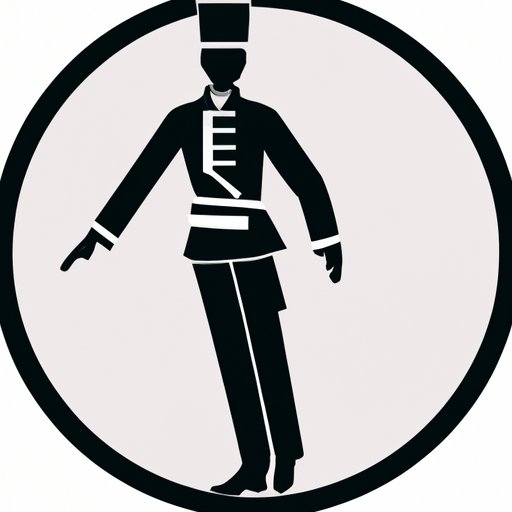Introduction
The term “gandy dancer” is often used as slang for railroad maintenance workers, but its origin is a bit more mysterious than you may think. While the exact origin of the phrase remains unknown, the profession it describes has been around since the mid-1800s. In this article, we’ll explore what it means to be a gandy dancer, from their origins during the Industrial Revolution to their roles today, as well as the tools they use and the health and safety risks associated with the job. We’ll also examine the cultural significance of gandy dancers and how they are celebrated in modern culture.
A History of the Gandy Dancer
Gandy dancers first appeared in the United States during the industrial revolution of the mid-1800s. During this time, railroads were growing rapidly, leading to an increased demand for workers to maintain them. The name “gandy dancer” was likely derived from the phrase “gang and dance”, which referred to the group of men who worked together to lay and repair railroad tracks. These men were known for their synchronized movements, which gave the illusion of dancing while they worked.
In the early days of railroading, gandy dancers were essential to the success of the industry. They were responsible for constructing and maintaining railway tracks, a task that required strength, precision and skill. Their work was dangerous and exhausting, but it was also incredibly important. Without their efforts, the railways would not have been able to expand as quickly or efficiently.
What Does it Mean to be a Gandy Dancer?
Today, gandy dancers are still an essential part of the railway industry. They are responsible for a variety of tasks, including inspecting and repairing track, replacing ties and rails, and making sure that the rails are properly aligned. They must also be aware of potential hazards, such as rocks or debris that could derail a train. Gandy dancers must be knowledgeable about railway construction and maintenance, as well as safety protocols.
Gandy dancers typically work in teams of two or three. They begin their day by inspecting the track for any signs of wear or damage. If there are any issues, they will fix them using a variety of tools. After the track is repaired, they will move on to the next section of track, repeating the process until the entire line has been inspected and repaired.
Gandy dancers often work long hours in all types of weather conditions. Despite the hard work, they take pride in their craft and the importance of their role in keeping the railways running safely and efficiently.
The Gandy Dancer’s Toolbox
Gandy dancers use a variety of tools to do their job. These include hammers, crowbars, shovels, wrenches and pliers. They also carry spike pullers and mauls, which are used to remove old spikes and secure new ones. Other tools include tie hooks, which are used to move ties, and alignment bars, which are used to ensure the rails are properly aligned.
Gandy dancers also use survey equipment to measure the distance between two points, as well as the angle of the track. This helps them make sure the track is level and straight. Finally, gandy dancers use hand signals to communicate with each other while they work.
From the Ground Up
Constructing and maintaining railway tracks is a complex task that requires knowledge and skill. Gandy dancers must understand how to lay ties, install rails and adjust curves. They must also be able to identify defects in the track, such as warped ties or broken rails, and know how to fix them. In addition, gandy dancers must be familiar with the different types of track and the specific tools needed to work on them.
Working on the Railways
Working on the railways can be dangerous. Gandy dancers must always be aware of their surroundings and watch out for potential hazards, such as loose rocks or debris that could derail a train. They must also be careful when handling heavy tools and equipment and follow all safety protocols.
In addition, gandy dancers must be aware of the potential health hazards associated with their work. Prolonged exposure to loud noise and vibration can cause hearing loss and other health problems. Working in extreme temperatures can also be dangerous. Finally, gandy dancers must take precautions to protect themselves from falls and other accidents.
Making Tracks
Gandy dancers have played an important role in the development of the railway industry. They have helped build and maintain the tracks that connect cities and towns across the country. Their work is often overlooked, but it is essential to the success of the railways.
Gandy dancers have also had an important cultural impact. Many songs and stories have been written about them, celebrating their work and dedication. They are seen as symbols of hard work and perseverance, and their legacy lives on in the form of artwork, literature and music.

Paying Tribute to the Gandy Dancer
The work of gandy dancers is often overlooked, but it is an important part of our nation’s history. To honor their contribution, many organizations have organized events and celebrations in their honor. These events recognize the hard work and dedication of these workers, as well as their invaluable contributions to the railway industry.
Gandy dancers have also been immortalized in popular culture. Songs like “Gandy Dancer” and “The Gandy Dancer’s Ball” celebrate their work and legacy. There are also movies, books and artwork dedicated to the gandy dancer, ensuring that their story will live on for generations to come.
Conclusion
Gandy dancers have been an integral part of the railway industry since the mid-1800s. From constructing and maintaining railway tracks to recognizing potential hazards, their work is both dangerous and essential. They also have an important cultural significance, with songs, stories and artwork honoring their legacy. Today, gandy dancers are still celebrated for their contribution to the railways, and their work continues to keep the rails running safely and efficiently.
(Note: Is this article not meeting your expectations? Do you have knowledge or insights to share? Unlock new opportunities and expand your reach by joining our authors team. Click Registration to join us and share your expertise with our readers.)
